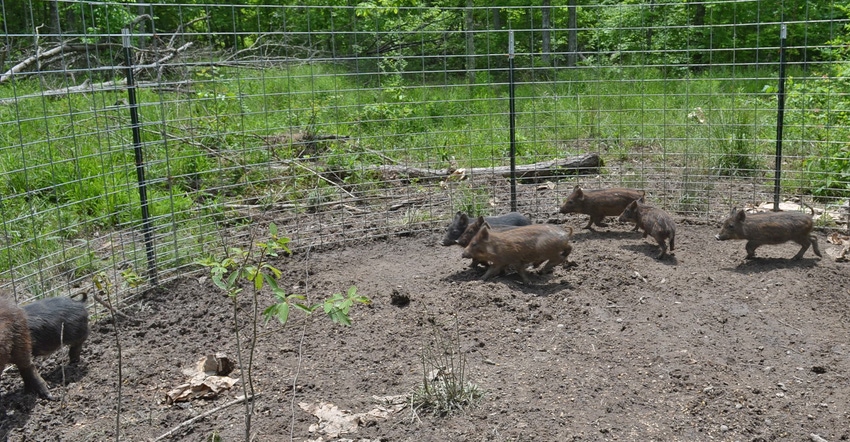
Last week, Missouri Ruralist shared the need for landowner help to eradicate feral hogs in the state. This week, Jason Jensen of the Missouri Department of Conservation offers insight into what farmers can expect when they get involved with trapping feral hogs.
Jensen is an incident commander with MDC and part of the Missouri Feral Hog Elimination Partnership. Here are five things to consider before you decide to start trapping on your property:
1. Long-term commitment. Trapping takes time. Feral hogs are a long-term problem requiring a long-term solution.
2. Education at the farm. MDC and USDA technicians walk landowners through the process, step by step. “We tell them how we’ll place the bait and game camera, how we ensure the feral hogs are hitting the bait consistently before we set up the trap, how it’s important that they get accustomed to the trap before we set a trigger, and how we catch and dispatch them,” Jensen explains.
3. Don’t shoot. Jensen says it’s important for landowners to not impede the trapping process. Hunting and shooting at feral hogs that come to a trap will condition them to stay away from traps.
4. Baiting do's and don’ts. Since corn is used to bait feral hogs, sometimes deer and turkeys also gather at a bait station. To keep landowners and hunters from being in violation of baiting laws, MDC conservation agents and landowners work with the trapping technicians to designate a “No Hunting Zone” around the trap site, and if possible, allow hunting on the remainder of the property, subject to approval of the landowner. The decision to stop trapping and hunt, or stop hunting and trap, or have a no-hunt zone is up to the landowner.
5. Carcass removal. After eliminating feral hogs, the landowner makes the decision of what is done with the carcasses. If the landowner does not want the carcasses, technicians dispose of the carcasses on the property. A common question the MDC receives is if feral hog carcasses can be eaten, Jensen says. “While there are many people that eat feral hog meat,” he says, “it’s important to know that wild, unvaccinated hogs can be a reservoir for many diseases and parasites.” It is against state law to possess, transport or breed feral hogs without a permit from the Missouri Department of Agriculture. Carcasses cannot enter the food supply. So, on private land, the landowner makes the decision of what is done with the carcass — whether to keep or dispose of it.
From the start to the finish of the feral hog trapping process, Jensen says the most important thing for landowners to know is that they’re in control of what happens on their land.
“We work with the landowner the entire time,” he says. “If they want to stop trapping during hunting seasons, that’s what we do. If they want to work with us to eliminate feral hogs from their property, that’s what we do. To be successful in complete elimination of feral hogs from Missouri, we absolutely must work together.”
Some information in this article was supplied by Missouri Department of Conservation.
About the Author(s)
You May Also Like






